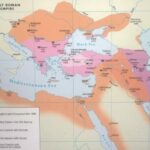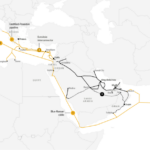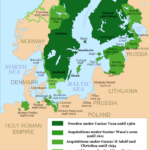The geo-strategic positioning of Italy is to be a crosspoint between North and South and Eats and West. When these territories and markets are rich, Italy is rich, as in Roman time. The unification process was politically influenced by France and UK, so Italy lost its competence on Asia, concentrated in Venice Republic, and started to look at continental Europe only, to North-West, being in the meantime excluded by Africa colonisation process. So Italy lost East and South until the first World War. With Libya colonisation, Savoy family politics in the Balkans, Ethiopia occupation, Italy tried to re-open East and South to commercial development, but results have been poor. After Second World War, Italy has been again included in North-West Europe market aggregation, but luckily in the last thirty years the World came to Italy thank you to globalisation process, so China and Asia were coming. only South remains now weak, sending here people not exchanging richness.
When I was writing of infrastructure and logistics twenty years ago, desperate for Italian inertia to these strategical issues, I forecasted that Chinese would have built the railways and highways we didn’t want to have in our courtyard. I was right, but now we are losing also this opportunity. They are building modern infrastructure, but parallel to our peninsula in the Balkans , having main port hub in Phireus-Athens, where Chinese managers of COSCO already work from 2010. These investments are planned in the framework of One Belt One Road strategic vision, launched by China , involving more then thirty countries, certainly not only for economic purposes but also for military ones. So high speed trains and super highways will cross a very difficult territory historically poor of infrastructures, to connect Athens with Budapest, Bratislava, Wien, cutting out our harbours and our markets. in my opinion this is a mistake from China side, giving priority to their influence on local populations, then to the real business demand . I was studying in the past five different areas of connection between Southern Europe and Asia, from Turkey to Spain, and Northern Italy, with its economic potential and local demand has no possible competitors, but of course Italy is a politically risky area for a foreign investor.
OBOR initiative is already critizised in many of the countries involved, for its real hidden objectives of China imperialism and for enormous weight on debts of fragile economies, which are requested to contribute by the Big Leader. The choices for Mediterranean area don’t seem to be economically correct, considering the low demand of Greek economy and the impact of transhipment costs to feed Adriatic an Thirrenic Italian ports, where a high level of demand is generated by a rich 25 million North and East Regions. Cost of infrastructures building in Balkans mountain territories will be also very high , whereas the expanding of Italian lines would be less expensive. Of course the management of Phireus harbour already acquired is the main pillar of the Chinese strategy, and the first container ship of last generation with 20000 containers has already arrived. The harbour will be the first in Mediterranean with 7.5 million of containers overcoming Algesiras, already in the next year.
In this new scenario, where the economic drivers of development move to East, the infrastructural axis of Italy, particularly in the North must be seriously reconsidered and the geostrategic positioning carefully re-thought. Probably a new passage to Austria more then Brenner must be designed, and contemporarily all the railway and highways system between Italy and Slovenia and Croatia must be accelerated and empowered, if we don’t want to loose the benefits of OBOR strategy. It’s already clear the trend of heavy traffic to Eastern countries in the last five years, and our infrastructures from Venice on are really poor, practically at zero level the rapid transit between Trieste-Lubiana and Trieste-Rijeka- Zagreb. The most benefits of the new logistic map will be in Budapest as a South Europe terminal, and of course on the Moscow-Varsaw main line of connection to Berlin and Germany rich market and to Hamburg and West Rim of Europe. Also my pushing in the past to realise the railway to Kiev is a confirmed strategy for Italy, but we have lost a lot of opportunities in logistic field. Now the new network has been designed and again Italy must adapt to other’s initiative. In any case East is an opportunity to our economy and society, remain the big problems of South.
Personally I think that on the basis of our recent election, we are politically returning to a pre-unitarian Italy and we could usefully split along historical cultural and economic division, like Chech Republic and Slovakia peacefully have done in 1989, with enormous advantages for both. South of Italy could become rapidly an international touristic hub and express at least its fantasy and creativity in services , being its qualities not suitable to heavy industrial development. North of Italy could become another Switzerland, joining to the new technological revolution and the Central Europe countries.Both could be richer then now with Rome lazy and corrupted bureaucracy absorbing and destroying richness. South could also better develop relationship with Africa, keeping on the other areas of Europe growth. Globalisation requires a light State, technologically advanced administrations, less cost of centralisation. Going on along past trends and habits will not give any positive shock to Italians looking more to past then to future and against any change.




